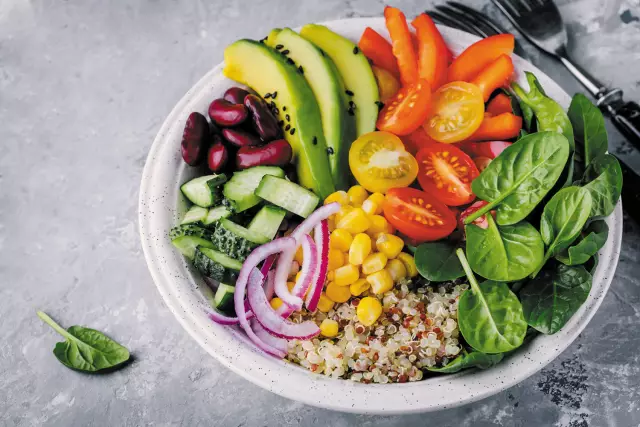- Author Rachel Wainwright [email protected].
- Public 2023-12-15 07:39.
- Last modified 2025-11-02 20:14.
9 healthy foods that have been undeservedly forgotten
Turnip, radish, horseradish - once these and other products were very popular with our ancestors, being not only nourishing food, but also medicines that cure many diseases. Unfortunately, the use of some traditional foods has long gone out of fashion. Their inclusion in the modern diet is an effective measure of prevention and treatment of ailments that our ancestors rarely suffered: obesity, diabetes mellitus, diseases of the skeletal system, vascular atherosclerosis, etc.
Turnip
Almost until the 20th century, turnip was the guest of honor of the Russian table. Soups, cereals, pie fillings, pickles were made from it. Today, turnips can be considered almost an exotic vegetable: dishes made from it are a rare occurrence. But it is difficult to find analogues in nutritional value for this nondescript-looking root crop.
Being a source of vitamin C, carotene, mineral salts, turnip serves as an effective remedy for vitamin deficiency, and the high content of calcium (together with magnesium, which improves its absorption) helps prevent rickets and diseases of the skeletal system. In the pulp of the root vegetable there is a natural antibiotic that inhibits the growth of almost all types of bacteria and fungi (except for staphylococcus and Escherichia coli), thanks to which the turnip acts as an effective remedy for treating bronchitis, laryngitis, asthma, toothache, and other ailments.

Source: depositphotos.com
Swede
Rutabaga ("Swedish turnip") is another valuable vegetable, the benefits of which have been undeservedly forgotten. In appearance, it resembles beets, and in terms of vitamin C content it surpasses onions, tomatoes and oranges, approaching in terms of indicators to white cabbage. Dishes from rutabagas - these can be salads, soups, stews - are good for diabetics and obese people. Coarse fiber in its composition perfectly cleanses the intestines, and the juice obtained from the pulp has a laxative effect. The vegetable is successfully used in folk medicine for the treatment of skin diseases, respiratory diseases and cleansing the body.

Source: depositphotos.com
Oatmeal
Flour made from grains of barley, peas or oats, called oatmeal, is an old Russian product widely used for making cereals, soups, pastries, jelly and even tea drinks. The advantage of oatmeal in comparison with conventional flour is its high nutritional value (due to residual grain fractions), as well as a special taste and aroma reminiscent of cocoa. It is noteworthy that oatmeal does not need to be cooked to be eaten - it is enough to brew it with hot milk or water.
Laminated fiber is rich in bioflavonoids that help regulate the immune and endocrine systems, cleanse the body of toxic substances, and also actively participate in cell regeneration. B vitamins have a positive effect on the state of the nervous system, memory, hair and nails, and the rare antioxidants avenanthramides, which can only be found in oats, prevent the formation of plaques on the walls of blood vessels. The unique properties of oatmeal make it indispensable for a healthy diet - but, unfortunately, like many other primordially Russian products, you can hardly find it on store shelves.

Source: depositphotos.com
Jerusalem artichoke
Jerusalem artichoke (often called an earthen pear) is another root crop displaced by potatoes. Nevertheless, this vegetable, sweetish in taste, is much more useful than its counterpart, surpassing in iron content and it, and carrots, beets, turnips. Jerusalem artichoke contains a lot of inulin - a natural analogue of insulin that regulates blood sugar - and therefore becomes the number one product in the diet of people with diabetes.

Source: depositphotos.com
Horseradish
This plant, traditional for our region, with a sharp, spicy taste, also appears on the modern table less and less. However, you should not neglect it: horseradish is ahead of many vegetables in the content of carotene, B vitamins, indigestible coarse fibers that improve intestinal function, and the proportion of vitamin C in horseradish leaves exceeds that of citrus fruits, second only to black currants and rose hips. Speaking about the benefits of horseradish, one cannot fail to note its high bactericidal properties, achieved thanks to lysozyme, an antibiotic that is destructive for most microbes. So, the plant is widely used in the treatment of angina, whooping cough, inflammation of the urinary tract, and is also an effective means for removing worms from the body.

Source: depositphotos.com
Radish
Another half-forgotten vegetable, the use of which with honey was considered a cure for all diseases. And today the radish, slightly bitter in taste, has not lost its healing properties. It is believed that dishes made from it help to increase appetite and improve digestion, being an effective remedy for intestinal atony, constipation, cholecystitis, and gallstone disease. In folk medicine, radish pulp is used as a warming and wound-healing agent in the treatment of purulent wounds, ulcers, arthritis and rheumatism.

Source: depositphotos.com
Parsnip
The root of parsnip, a crop grown in few places today, looks like a carrot, but is white. The sweetish, slightly spicy taste of the vegetable allows you to use it in the preparation of various mashed potatoes, sauces, and canned food. It is believed that regular consumption of parsnips prevents the development of heart pathologies, urolithiasis, salt deposits, and also lowers blood sugar and cholesterol levels. The leaves of the plant, which are used as a seasoning for food, also have a healing effect. Due to its rich vitamin composition, a decoction of parsnip leaves is effective in treating coughs, colds and weakened immunity.

Source: depositphotos.com
Lentils
This legume product, once widespread in ancient Rome, Greece and Egypt, is undeservedly ignored in the modern world. But dishes made from lentils are much healthier than their related cultures - peas, beans, chickpeas. For example, a serving of lentils contains about 90% of the daily value of folic acid. In addition, the product is rich in omega-3 and omega-6 unsaturated fatty acids, which are responsible for the state of cell membranes, but are not synthesized by the body. Together with lentils, a person receives plant protein, fiber, vitamins, minerals, trace elements and useful amino acids. One of them, tryptophan, is responsible for the production of serotonin, which improves mood and resistance to stress.

Source: depositphotos.com
Rhubarb
A plant with red petioles and large green leaves is rarely found in vegetable beds today. Meanwhile, rhubarb was considered the most valuable medicinal crop in Russia for a long time. Only the stem of rhubarb, which has a pleasant taste with a slight acidity, is used for food, which, as a rule, is stewed with the addition of sugar. Delicious and healthy desserts, rich in carbohydrates, vitamins (B, C, PP), pectin, citric and malic acids, are obtained from the vegetable. The use of rhubarb contributes to the better functioning of the digestive system, it is used as a laxative and choleretic agent, as well as for the prevention of tuberculosis, anemia, heart and lung diseases, colds. Children should use this vegetable with caution:The high oxalic acid content of rhubarb against the background of immature digestion can cause serious poisoning.

Source: depositphotos.com
YouTube video related to the article:

Maria Kulkes Medical journalist About the author
Education: First Moscow State Medical University named after I. M. Sechenov, specialty "General Medicine".
Found a mistake in the text? Select it and press Ctrl + Enter.






